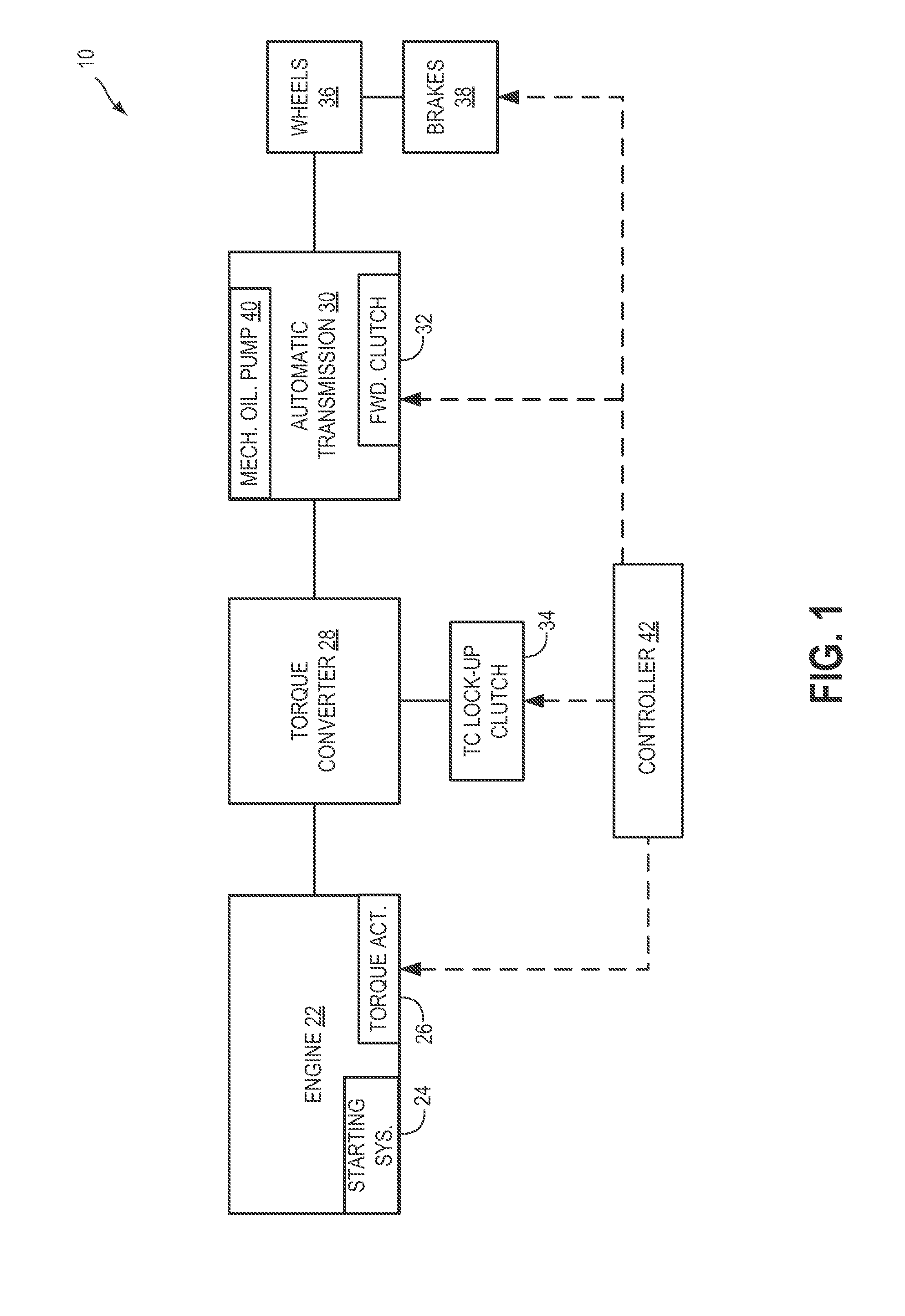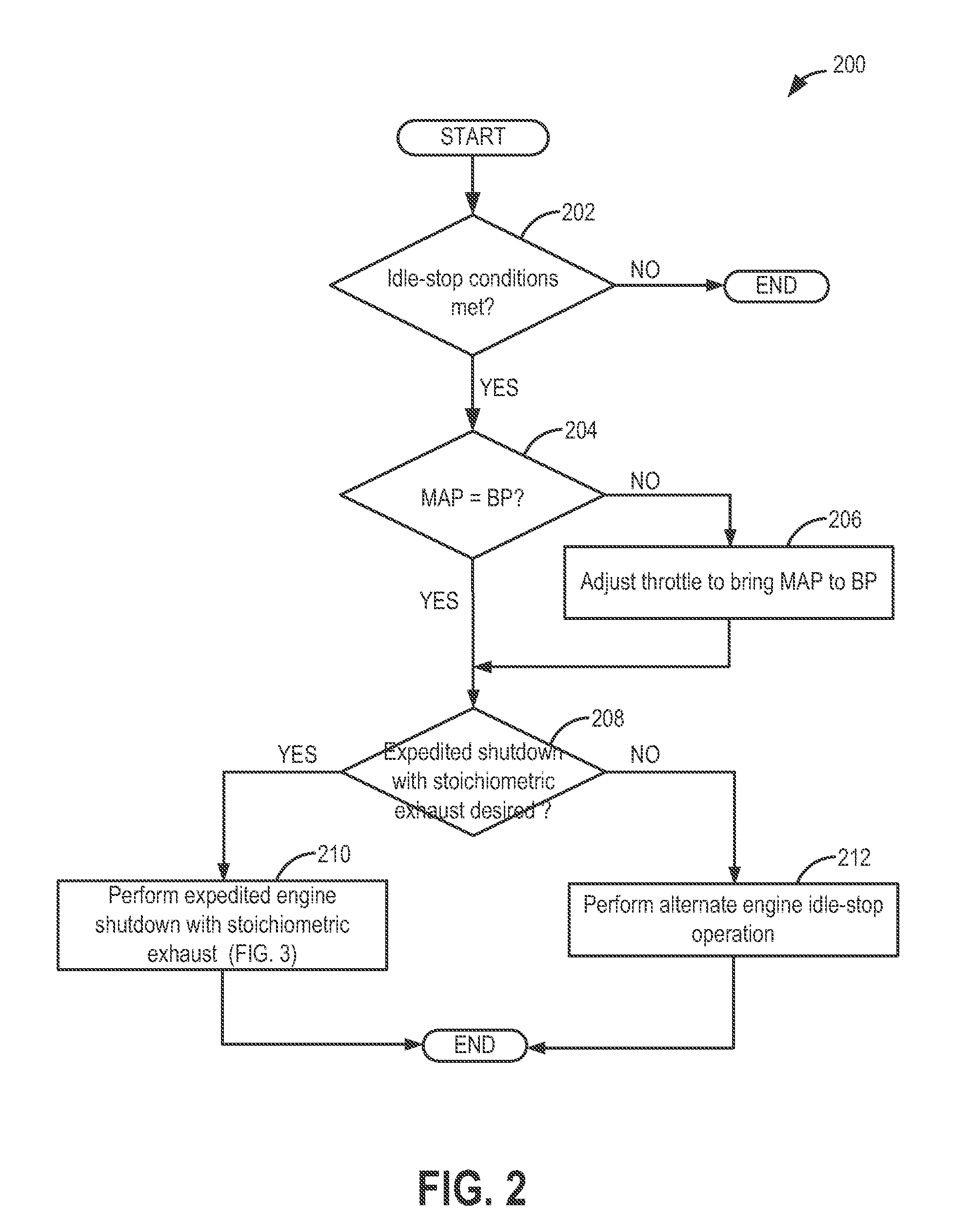Methods and systems for assisted direct start control
a technology of assisted direct start and start control, which is applied in the direction of idling devices, machine/engine control, process and machine control, etc., can solve the problems of increased fuel consumption, potential misfires or unintended combustions, and reduced the chance of timely engine shutdown, so as to reduce exhaust emissions, reduce noise, and save fuel
- Summary
- Abstract
- Description
- Claims
- Application Information
AI Technical Summary
Benefits of technology
Problems solved by technology
Method used
Image
Examples
Embodiment Construction
[0015]The following description relates to systems and methods for performing an expedited engine shutdown with stoichiometric exhaust to expedite engine spin-down during an idle-stop, and prolong elevated catalyst temperature conditions during the shutdown. In response to idle-stop conditions, an engine controller may be configured to engage a starter, without applying starter current, to apply an anti-reversal torque on the rotating engine. The controller may also adjust a throttle position to thereby raise manifold pressure closer to barometric pressure (FIG. 2). In one example, the controller may further adjust fuel injection and spark timing to perform an expedited shutdown with stoichiometric exhaust. Herein, as shown in FIG. 3, fuel injection to each cylinder of the engine may be adjusted based on individual cylinder flammability limits. For example, some cylinders may be rich injected while some cylinders are lean injected, the injections adjusted such that that the final ex...
PUM
 Login to View More
Login to View More Abstract
Description
Claims
Application Information
 Login to View More
Login to View More - R&D
- Intellectual Property
- Life Sciences
- Materials
- Tech Scout
- Unparalleled Data Quality
- Higher Quality Content
- 60% Fewer Hallucinations
Browse by: Latest US Patents, China's latest patents, Technical Efficacy Thesaurus, Application Domain, Technology Topic, Popular Technical Reports.
© 2025 PatSnap. All rights reserved.Legal|Privacy policy|Modern Slavery Act Transparency Statement|Sitemap|About US| Contact US: help@patsnap.com



